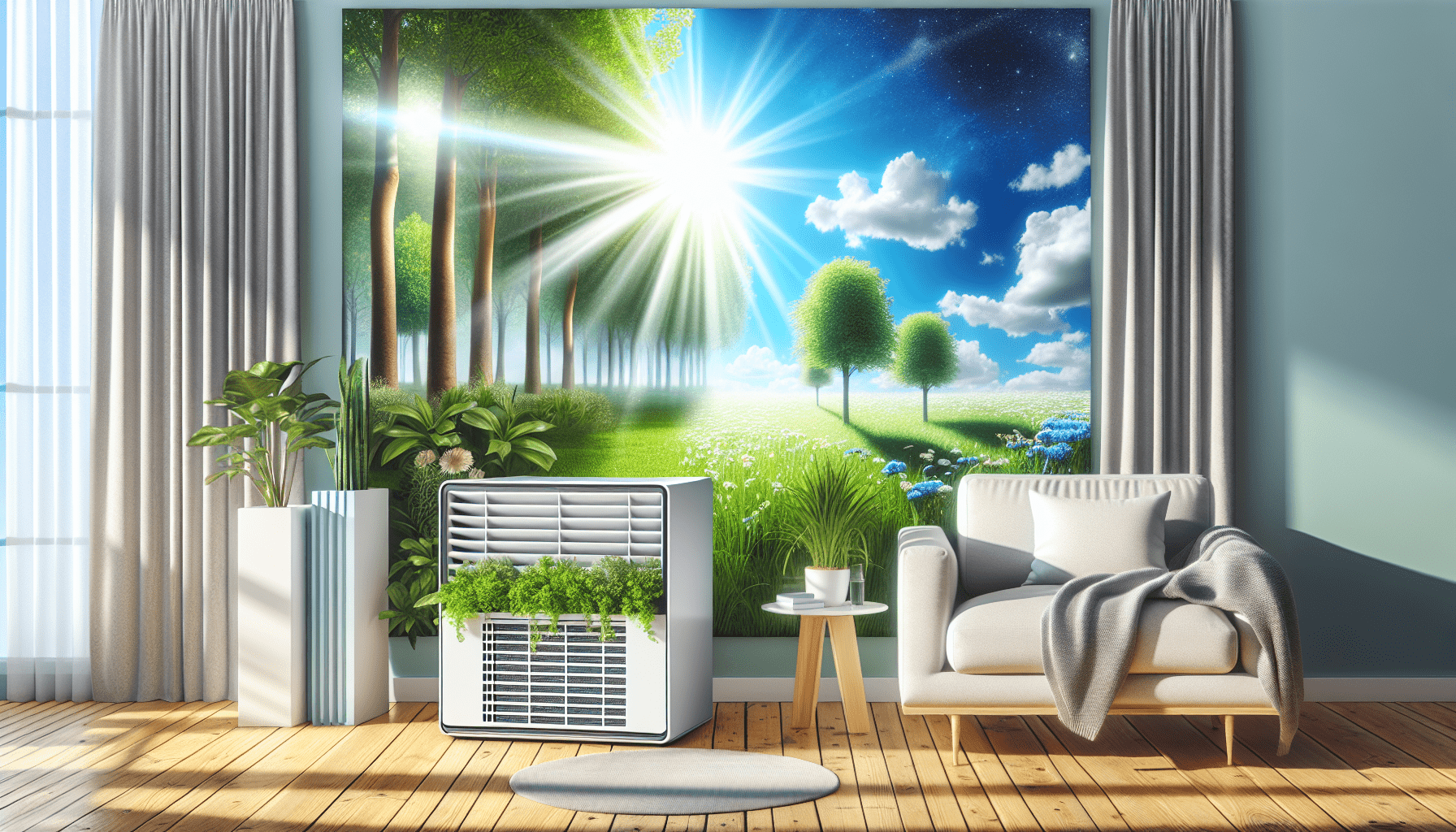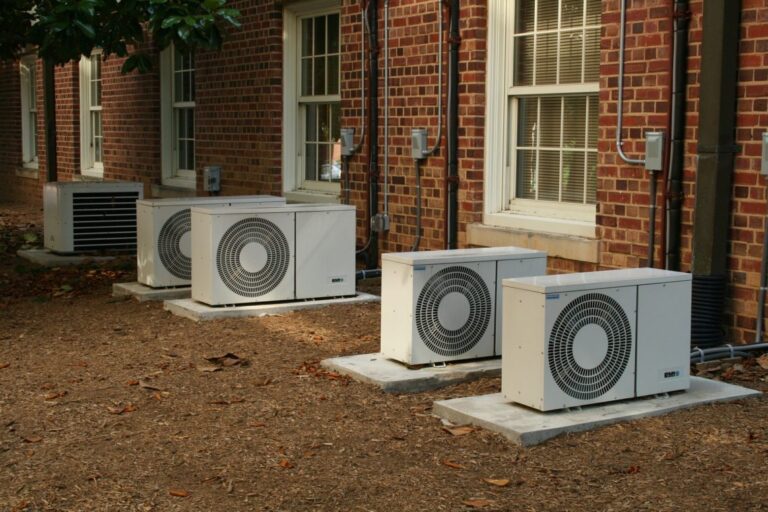

HVAC Services
Get Professional Repairs From The Area's Trusted HVAC Technicians. Ask About Our Services! We Offer Professional Heating & Cooling System Repairs And Guarantee Long-Lasting Results.
Got Question? Call us: (850) 678-2665Financing
Maximizing Air Quality In Pollen Seasons
Breathe easier during pollen seasons with expert tips on improving your home's air quality. Learn practical steps to reduce allergens and enjoy a healthier indoor environment.

As you navigate through the blooming beauty of spring, ensuring the best possible air quality in your home becomes a top priority. “Maximizing Air Quality in Pollen Seasons” provides helpful tips and practical advice to maintain a healthy indoor environment despite high pollen counts. With insights and recommendations, this article guides you through effective ways to keep allergens at bay, helping you to breathe easier and enjoy the season more fully. For expert assistance, Tempacure Heating and Air Conditioning in Niceville, FL, stands ready to support your efforts with professional services designed to optimize your indoor air quality.
Have you ever noticed that with the arrival of spring and the blooming of flowers, your allergies kick into overdrive? Just as you’re ready to soak up the sunshine and enjoy outdoor activities, you find yourself sneezing, coughing, and itching your eyes like there’s no tomorrow. It’s as if nature has conspired against you, turning your home into a pollen-infested prison. Nothing ruins a perfect spring day faster than allergies, am I right?
But don’t worry; you’re not alone in this pollen war. Many of us suffer through pollen seasons, wondering if there’s a way to breathe easier and keep our air quality at a level that doesn’t turn us into miserable, sneezy zombies. The good news is, there are practical steps you can take to make your home a sanctuary from the pollen apocalypse. So grab a cup of tea, sit back, and let’s dive into the nitty-gritty of “Maximizing Air Quality In Pollen Seasons.”
Understanding Pollen and Allergies
Before we tackle the problem, it’s essential to understand what you’re up against. Pollen is a fine powder produced by plants during their reproductive cycle. Trees, grasses, and weeds release pollen into the air to fertilize other plants, but unfortunately, it doesn’t stop there. This pollen can easily infiltrate your living space, causing havoc for anyone with pollen allergies.
Types of Pollen
Did you know that not all pollen is created equal? There are different types of pollen which are prevalent at various times of the year. Let’s break them down:
| Type of Pollen | Source | Peak Season |
|---|---|---|
| Tree Pollen | Trees (e.g., oak, birch, pine) | Late winter to early summer |
| Grass Pollen | Grasses (e.g., Timothy, Bermuda) | Late spring to early summer |
| Weed Pollen | Weeds (e.g., ragweed) | Late summer to early fall |
By knowing which type is prevalent, you can better prepare your home to combat its effects.
Common Allergy Symptoms
You might already be all too familiar with the symptoms, but let’s list them out for good measure. Here are the top offenders when it comes to allergy symptoms:
- Sneezing
- Runny or stuffy nose
- Itchy eyes, mouth, or skin
- Watery eyes
- Fatigue
Understanding these symptoms will help you know what you’re dealing with and provide clues on how to mitigate them effectively.
Preventing Pollen From Entering Your Home
The first step in maximizing air quality during pollen season is to keep the pollen outside where it belongs. While completely eliminating pollen from entering your home is impossible, you can significantly reduce its presence with some practical steps.
Sealing Windows and Doors
You might love the fresh spring air, but your wide-open window is basically an invitation for pollen to waltz right in. You’ll thank yourself later if you aim to keep them closed, especially during peak pollen hours, typically early mornings and late afternoons. Additionally, ensure that all windows and doors have tight seals. Weatherstripping can be a game-changer in keeping unwanted outdoor elements from sneaking into your haven.
Using Air Purifiers
Investing in a good air purifier can make a world of difference. Air purifiers are specifically designed to trap airborne particles, including pollen, dust, and other allergens.
Choosing the Right Air Purifier
When selecting an air purifier, look for these features:
- HEPA Filters: High-Efficiency Particulate Air (HEPA) filters can capture 99.97% of particles that are 0.3 microns or larger, effectively trapping pollen.
- Coverage Area: Make sure the purifier can handle the size of the room where you plan to use it.
- Noise Level: Choose a model that operates quietly if you plan to use it in your bedroom or living space.
Keeping Your Home Clean
One of the simplest, yet most effective methods is regular cleaning. However, it’s not about how clean your house looks; it’s about getting rid of microscopic pollen particles that accumulate on surfaces.
Vacuuming
Use a vacuum with a HEPA filter to ensure you’re picking up the smallest particles. Pay special attention to carpets, rugs, and upholstered furniture where pollen can cling.
Dusting
Do not underestimate the power of a damp cloth. Dry dusting often spreads pollen around rather than removing it. Make it a habit to wipe down surfaces with a damp cloth regularly.
Managing HVAC Systems
Heating, Ventilation, and Air Conditioning (HVAC) systems can circulate pollen throughout your home if not properly maintained. But with a few tweaks, they can become formidable allies in your fight against pollen:
- Change Filters Regularly: Utilize high-quality filters rated for capturing allergens and change them as recommended, typically every three months.
- HVAC Maintenance: Scheduled maintenance can ensure your system is working efficiently and not distributing allergens.
- Humidifiers: Maintaining an indoor humidity level between 30-50% can help reduce the survival of airborne allergens.

Creating a Pollen-Free Safe Zone
While it’s nearly impossible to rid your entire home of pollen, designating a ‘safe zone’ can provide a much-needed respite from allergy symptoms. Your bedroom is an ideal contender for this role as it’s where you spend a considerable amount of time.
Bedding and Linens
Changing your bed linens frequently can prevent a build-up of pollen. Wash sheets, pillowcases, and blankets at least once a week in hot water to kill allergens.
Enclosed Space
Keep your safe zone enclosed by keeping doors and windows shut. Place an air purifier in your bedroom and ensure the HVAC system is equipped with a high-efficiency filter.
Indoor Plants
While some houseplants can improve indoor air quality by eliminating toxins, others can exacerbate allergies. Opt for low-pollen plants that can enhance the air quality without adding to your woes.
Recommended Low-Pollen Plants:
| Plant Name | Features |
|---|---|
| Spider Plant | Effective for removing pollutants |
| Snake Plant | Hardy and low-maintenance |
| Aloe Vera | Gel has added health benefits |
Outdoor Activities and Pollen Management
Managing air quality within your home is just one piece of the puzzle. You’ll also need to adapt your outdoor habits to minimize exposure to pollen.
Monitoring Pollen Levels
Technology, my friend, is here to help. Various websites and apps offer daily pollen forecasts. Use these resources to plan your activities for times when pollen counts are lower, often after rain or in the late afternoon.
Changing Clothes
After spending time outdoors, make it a habit to change your clothes and shower to remove any pollen from your skin and hair. Your indoor environment will remain cleaner and your air quality higher.

Consulting Experts
When in doubt, seek the help of professionals. HVAC and air quality experts, such as Tempacure Heating and Air Conditioning, can conduct an air quality assessment of your home and provide customized recommendations.
Why Choose Tempacure?
Located in Niceville, FL, Tempacure Heating and Air Conditioning can help you optimize your home’s HVAC system for better air quality through:
- Professional maintenance and filter changes
- Air purification systems
- Humidifiers and dehumidifiers to maintain ideal humidity levels
Contact Tempacure at (850) 678-2665 or visit their website Tempacure HVAC to learn more about their services.
Conclusion
Understanding pollen, recognizing its impact, and taking tangible steps can turn your home into a pollen-free haven. While it may seem daunting, breaking the process into manageable tasks, like sealing windows, using air purifiers, and maintaining your HVAC system, can make all the difference.
So, don’t wait for your next sneeze attack to start your mission against pollen. Follow these guidelines and reclaim your sanctuary. Happy spring, and may your home be a breath of fresh air.





